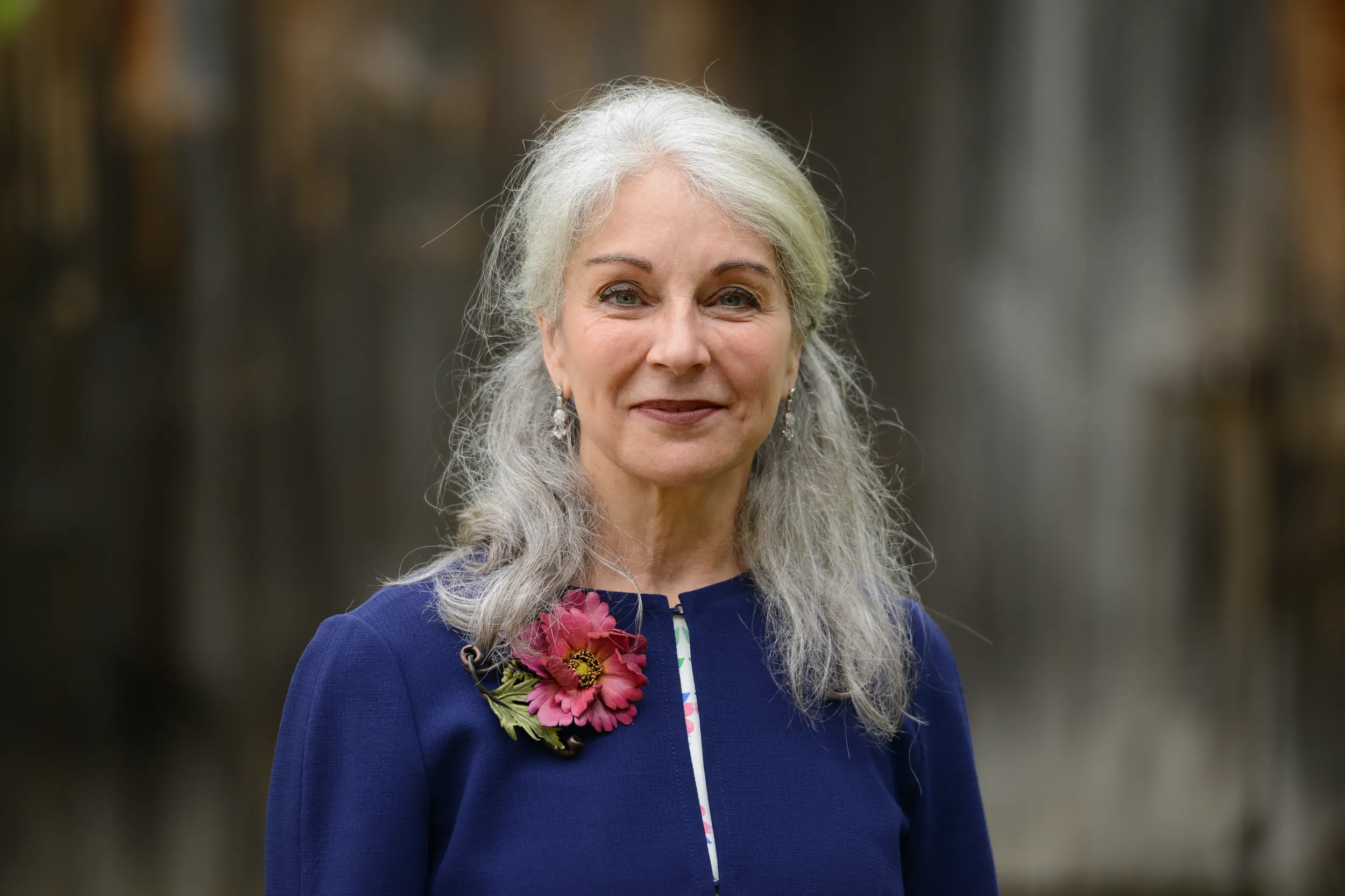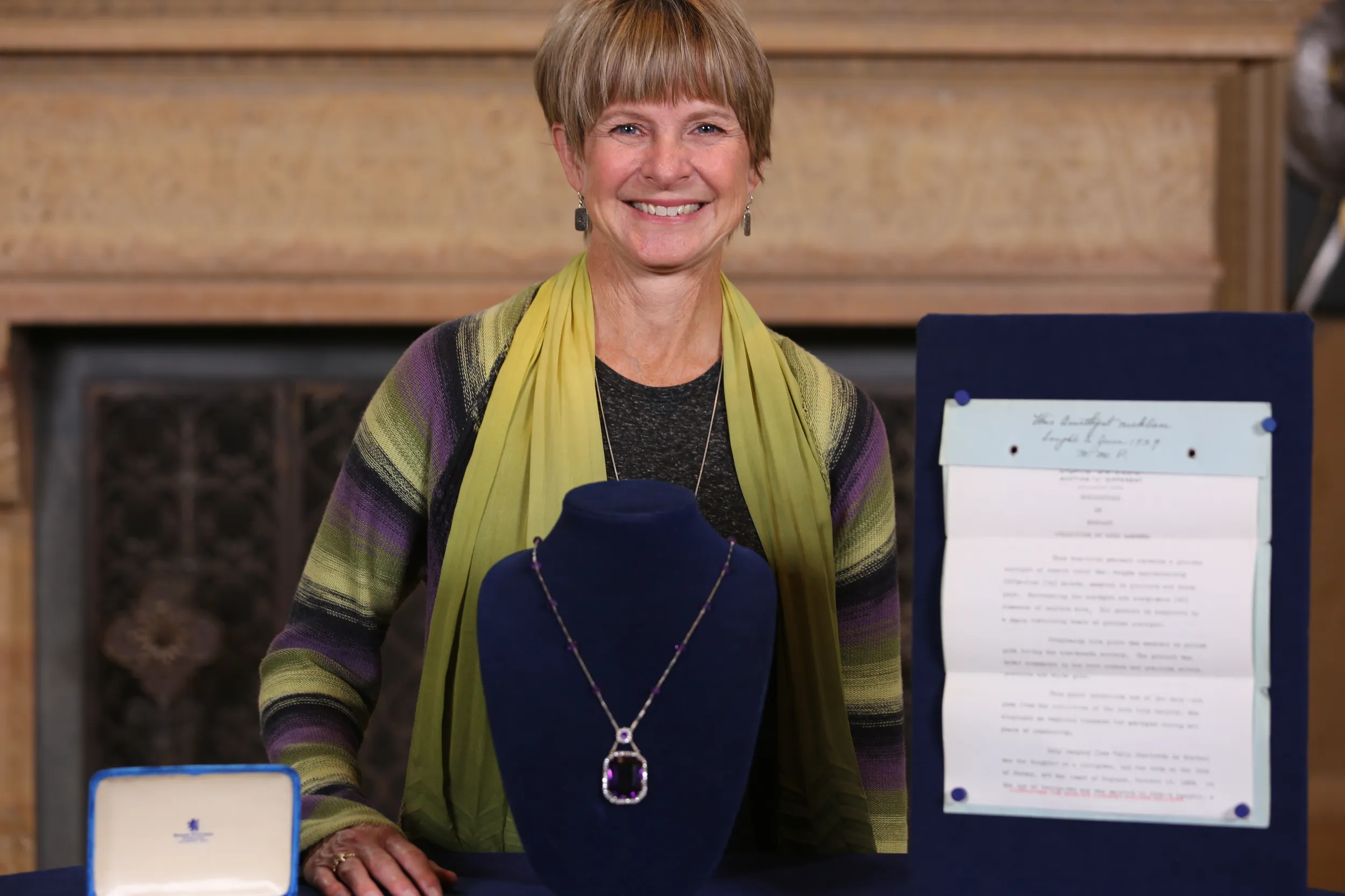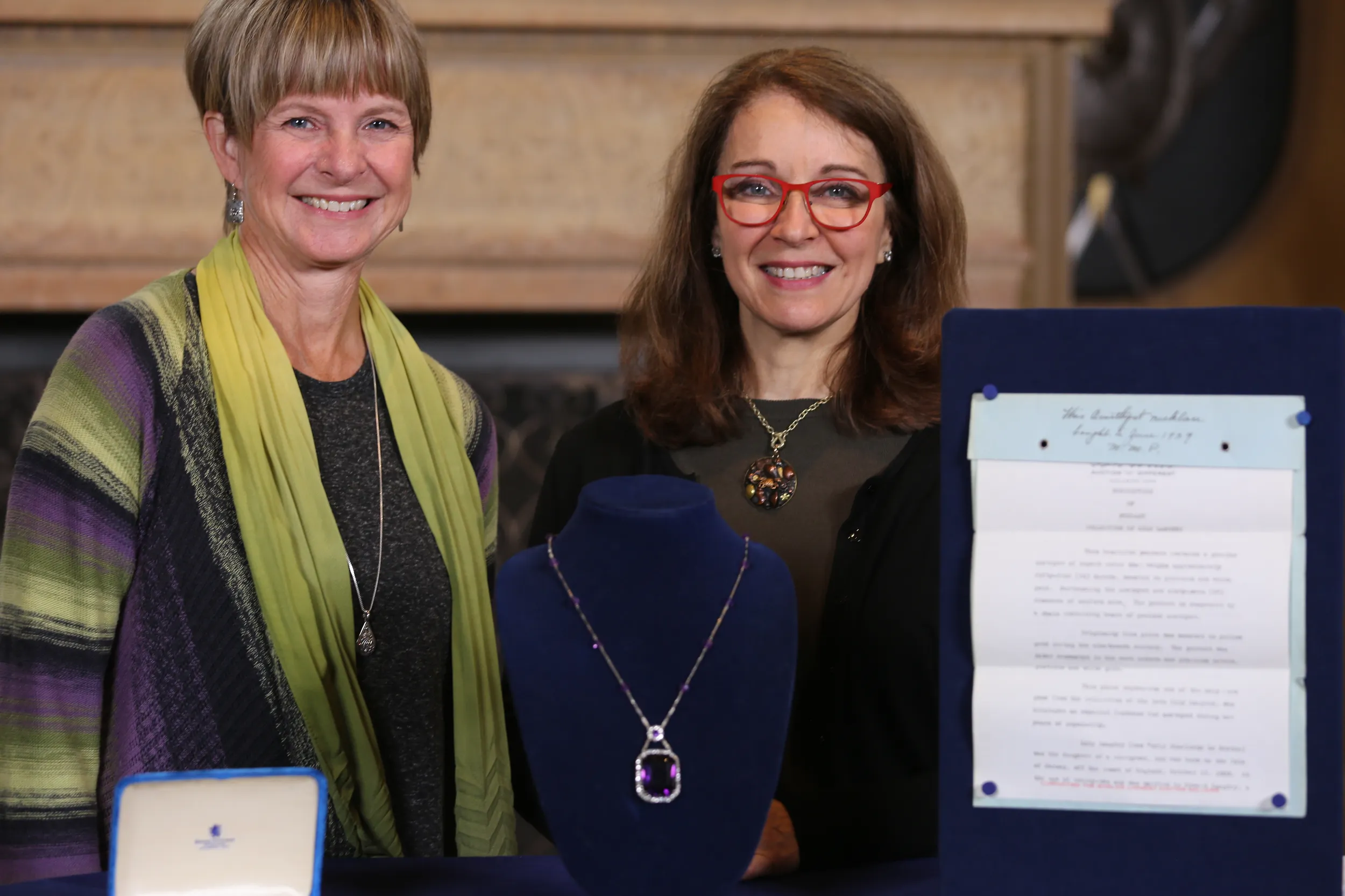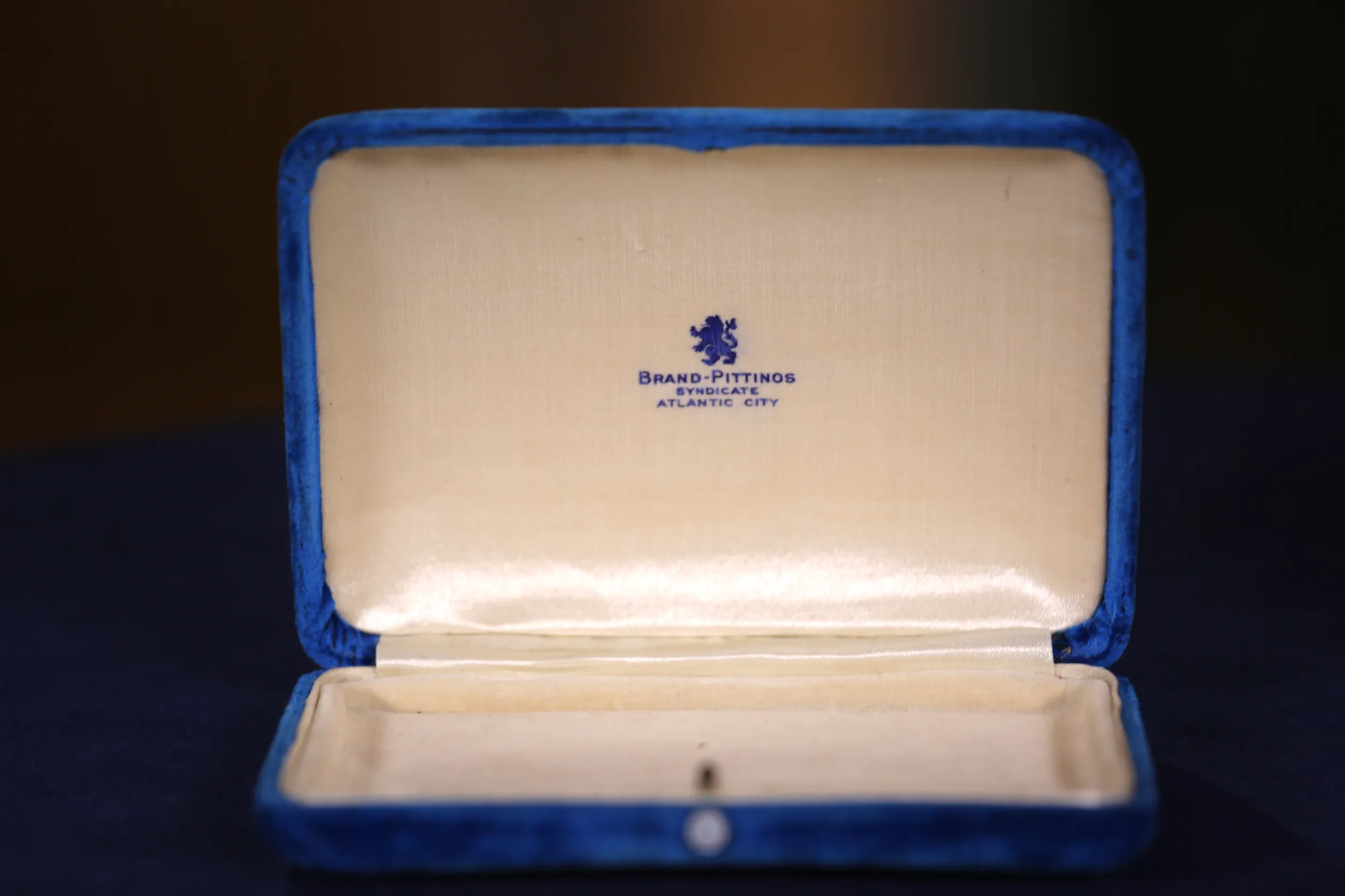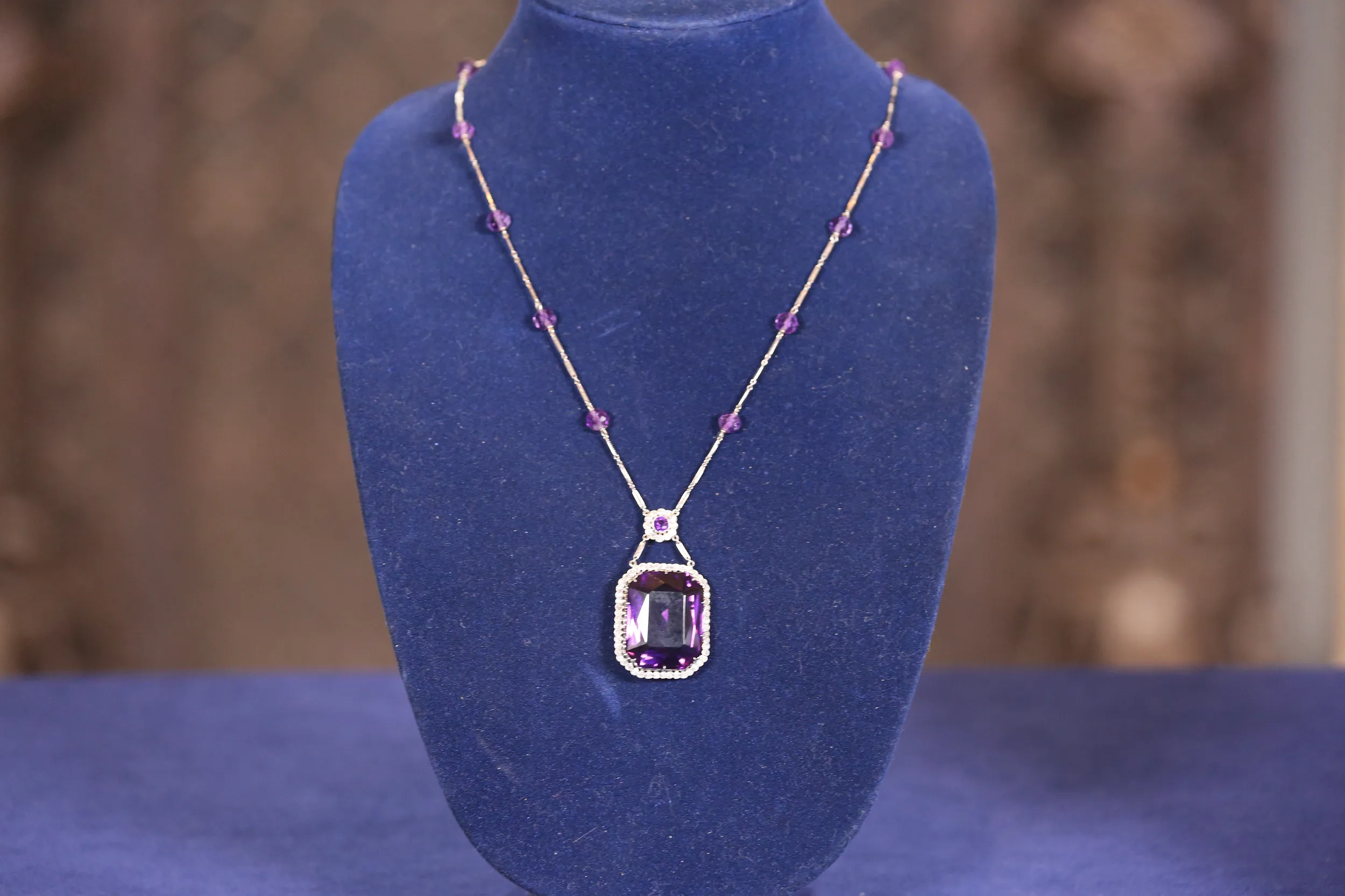GUEST: We have an amethyst necklace that was my husband's great-grandmother's. I inherited it last year from my mother-in-law when she died. All we know is that she bought it at auction in 1929 in Atlantic City. And it was the year that Lillie Langtry died, and it's supposed to have been one of her necklaces. She loved amethyst because we have other... like, an amethyst letter opener, amethyst rings. She was really excited about amethyst, which I had read that Lillie Langtry also was.
APPRAISER: Do you know how much it was paid for? How much was paid for it?
GUEST: We don't, we don't. The... the paperwork that we had just shows that it was Lillie Langtry's, and the year that it was purchased.
APPRAISER: Well, let's talk about Lillie Langtry. She was born on the island of Jersey, in the Channel Islands, in 1853. She moved to London after her first marriage in 1876. She was an actress. She was a socialite. She was a social darling. In 1877, she met the future king, Edward VII, the Prince of Wales, at a dinner party. He maneuvered to sit next to her, and it began a relationship that lasted for many years. They were lovers for three years, and then she got pregnant with another man's child. Now, interestingly, Edward VII purchased a house for her in Bournemouth and actually paid for her confinement in Paris. She ended up with property in California, and she died in Monaco in 1929. And here in June, in 1929, Harold A. Brand has an auction that includes her jewelry, from which your husband's great-grandmother purchased this necklace.
GUEST: Right.
APPRAISER: So, we have to ask ourselves, how does a royal piece... piece of royal provenance end up in New Jersey? I take a look at what paperwork is represented, because provenance is very important.
GUEST: Right.
APPRAISER: But I have a couple of questions here. And one of questions is, why is this royal piece re-mounted? In the description, the original yellow gold mounting that Edward gave her this amethyst in-- it's a beautiful amethyst, but he gave her this amethyst in the yellow gold mounting-- has been re-mounted. And the mounting is very contemporaneous to the late 1920s.
GUEST: Oh, okay.
APPRAISER: It's platinum, the spring ring is white gold, and all of these things are hallmarks of the 1920s. The stone itself is very, very beautiful, but it really outshines the quality of the rest of the mounting.
GUEST: Oh, okay.
APPRAISER: According to the paperwork, it's a repurposed Victorian stone. I have my doubts about that. It's a really good amethyst. It's got great qualities about it. It's possibly Siberian. However, it's a scissor cut. It's a very stylistic cut from the Deco period. So, we ask ourselves, who is Harold A. Brown? Let's check this out. And, unfortunately, we find in 1949, Harold A. Brown is brought up on conspiracy... multiple conspiracy charges.
GUEST: (laughing) Oh, my goodness!
APPRAISER: For conspiracy and fraud. So, we have our doubts. But, what we do have here is a really nice amethyst necklace from the Art Deco period.
GUEST: Okay.
APPRAISER: King Edward gave jewelry to his lovers and to his wife by famous makers. This piece does not have any maker marks on it. The mounting is platinum. The spring ring clasp is 14-karat white gold, which puts it right at the end of the 1920s at the earliest. What we're seeing here is a simple clamshell case, fairly commercial quality for the late 1920s.
GUEST: Okay, so the case is not fancy enough, either. (laughs)
APPRAISER: Had it been given by Edward VII to Lillie Langtry, it would be one thing. But, nonetheless, a fair auction value is $3,000 to $5,000.
GUEST: Okay, okay.
APPRAISER: If it had royal provenance, we could double that price.
GUEST: Okay.
